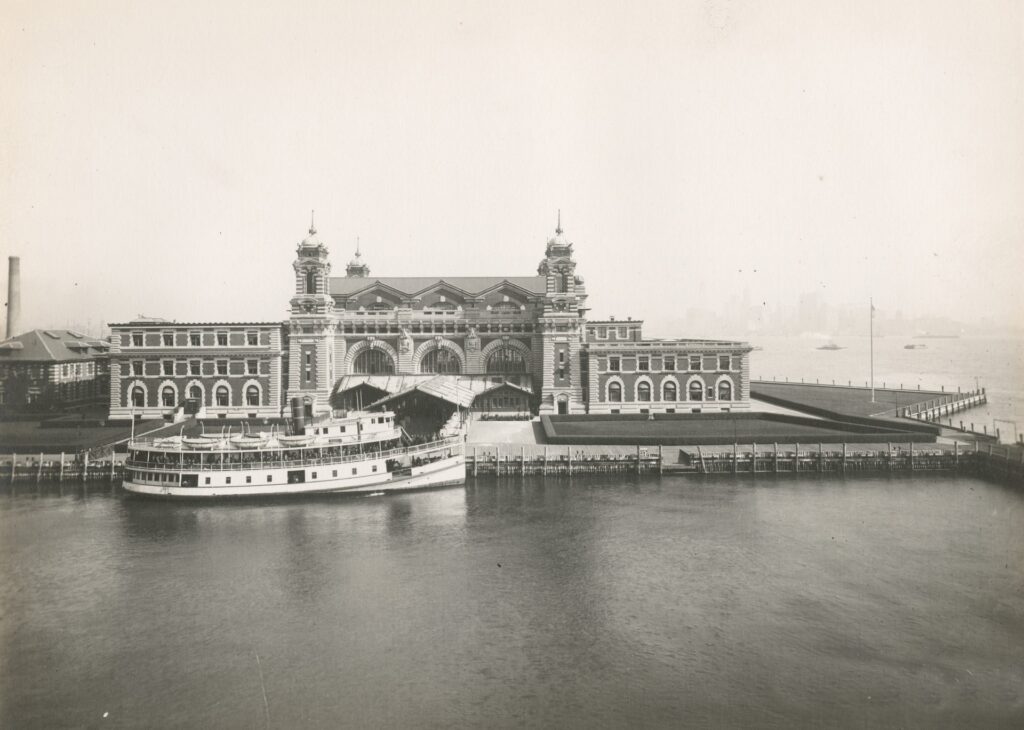Visiting Ellis Island
Just 10 minutes by ferry from the Statue of Liberty is Ellis Island, the famous gateway to the United States that millions of immigrants crossed in search of the American dream that would allow them access to a better life. After all, this was the land of opportunity, country of the free and home of the brave. Here everyone could fulfill dreams that were not possible in their countries of origin.
Ellis Island became known as Immigration Island: More than 100 million Americans are now said to be descendants of that immigration: 2.5 million Italians, 2.3 million Austro-Hungarians, 1.9 million Russians , 600,000 Germans and hundreds of thousands of Asians entered through Ellis Island.
Many of the passengers were third class, since those in higher classes usually disembarked first in Manhattan and then the rest were transferred to Ellis Island in smaller boats.
Ellis Island had a main building where all the procedures and controls were carried out, a hospital to care for people who arrived sick, some buildings for contagious diseases, a large dormitory building and the port.
On this island, all foreigners were subjected to severe bureaucratic and health inspections to enter the United States, leaving many in quarantine or, in the worst case, deported.
The island is named after Samuel Ellis, who bought the island in 1785 and gave it to the United States in 1808. Until 1814 it was used as a federal arsenal, becoming a military base for almost 80 years. Ellis Island is currently federal property but belongs to both New York and New Jersey.
Beginning in 1924, with the appearance of increasingly restrictive immigration laws, the flow of immigrants decreased to such an extent that Ellis Island began to be used as a temporary detention center and, later, as the headquarters of the United States Coast Guard. .
The buildings on the island closed in 1954 and fell into abandonment. Until a decade later, they became part of the Statue of Liberty monument and, like her, were managed by the United States National Parks network.
Since 1976, Ellis Island has been open to the public and it is really very easy to get to know it since it usually visits along with its neighbor, the Statue of Liberty.
How to get to Ellis Island
You must board the same ferry that goes to the Statue of Liberty (Subway Lines 4 and 5, Bowling Green Station in Manhattan, or from Liberty State Park in New Jersey)
With the same ticket to the Statue of Liberty and at no additional cost you can visit Ellis Island, before or after visiting Statue Island, since the Ferry is a circuit between both islands and the terminal in Manhattan or Jersey City .
You can go to the Island every day of the year between 9 am and 5 pm except December 25.
Visit the Immigration Museum:
After a few decades of abandonment, in 1990 the Immigration Museum was inaugurated on Ellis Island, telling the history of immigrants in the United States.
Here you can find photographs, letters, personal objects and all kinds of memories from the time. In addition, you can see from how health checks were carried out to how the most unfortunate were deported.
The museum is spread over three floors:
First floor: The Luggage Room is located here and was the place where new arrivals registered their belongings when disembarking. Here you can see a lot of old suitcases that people used to travel with to Ellis Island.
Second floor: the most striking space of the visit is located here, The Registry Room (also known as “The Great Hall”) and The Hearing Room, the two rooms where the medical check-up and the legal interview that determined entry or expulsion took place. of these immigrants from the United States.
Third floor: Here is The Dormitory Room, the place where immigrants who were temporarily detained for various reasons spent the night. The dormitory had a capacity for about 300 people who slept on bunk beds that could be raised to turn this space into a waiting room for the rest of the day.
Outside the Immigration Museum and overlooking the Lower Manhattan skyline is the Wall of Honor, a memorial where the names of thousands of immigrants are engraved. The curious thing is that The Wall of Honor is not a finished memorial, since on its walls the descendants of those immigrants can still pay tribute to their ancestors by adding their names in exchange for a donation to The Statue of Liberty—Ellis Island Foundation.
We have the unbeatable price of $500 per day for your Billboard:
Option 1: Your 60 second video/photo will be shown, 60 seconds per hour 22 times a day.
Option 2: Your 30 second video/photo will be shown, twice an hour, 44 times a day.
Option 3: Your 15 second video/photo will be shown 4 times per hour 88 times per day.
Please let us know which option you would like to choose. Remember that we have a response time of 72 hours.

